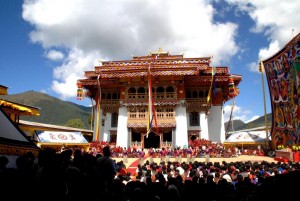
Bhutan, in the heart of the Eastern Himalayas, is a haven of harmonious evolution. The Bhutanese live in harmony with nature and have evolved a unique identity that has originated from a religious, spiritual and cultural heritage. For visitors, we, in Little Bhutan, have compiled some key facts about a country whose history stretches back to the origins of Buddhism itself.
People
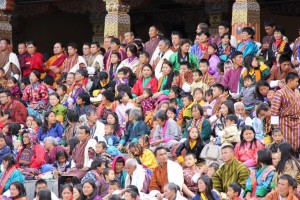
Friendly and hospitable, the Bhutanese are a homogeneous group that fall linguistically into three sub-groups. These groups are Sharchops, Ngalong and Lotshampa. There are also a number of smaller groups in the country with their own distinctive language. These groups form about one percent of the population. Some of these groups are the Tsanghos in the east, Layapas in the north-west, Brokpas in the north-east and Doyas in the south-west.
Food

Red rice is the staple diet along with wheat, buckwheat and maize. Dairy products like cheese, milk, yoghurt are also consumed in large quantities by the Bhutanese. Meat like pork, beef, yak, chicken and fish also feature in their diet with a mix of seasonal vegetables. Chilies, however, are considered a vegetable in Bhutan and not a spice.
Sports
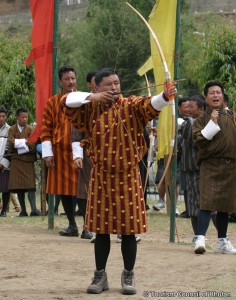
Archery is the national sport of Bhutan. Other traditional sports popular in the Kingdom include various kinds of shot-put, darts and wrestling. International sports such as soccer, basketball, volleyball, taekwondo, cricket, tennis, badminton and table tennis are also extremely popular.
Currency
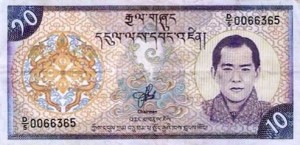
The currency of Bhutan is called Ngultrum. The G is silent when you pronounce it. Introduced in 1974, the Ngultrum is pegged with the Indian Rupee.
The Flag
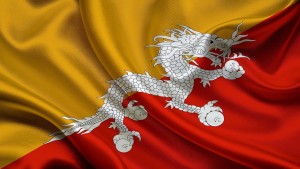
The rectangular Bhutanese flag is divided into two parts with a white dragon in the middle. The dragon symbolizes the name Druk Yul – meaning land of the thunder dragon and its white color is a representation of purity and loyalty. The yellow upper half signifies the country’s secular authority of the King in the affairs of religion and state. The lower saffron orange half signifies the religious practice and spirituality of Buddhism as manifested in the Drukpa Kagyu and Nyingma traditions.
Architecture
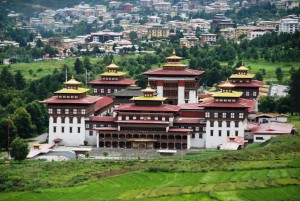
The dzong or fortresses seen across the country with their large courtyards and beautiful galleries are among the finest examples of Bhutanese architecture. Housing large monasteries inside and sitting on hilltops or at the confluence of rivers, these fortresses are also the administrative centers of their districts. However, the most common architectural sights in Bhutan are the chortens or small shrines built to house sacred relics.
Arts & Crafts
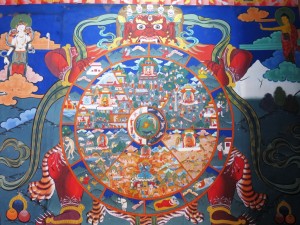
Bhutan is known for handicraft items in bronze, silver and other metals. Wall paintings & sculpting of religious figures is commonly practiced and every temple houses large brightly painted and gilded statues of the Buddha and other patron saints.
Economy
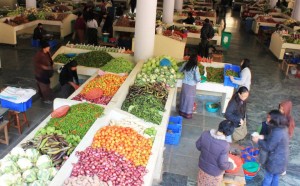
Bhutan being an agrarian society, agriculture and livestock rearing have traditionally been the mainstay of the Kingdom’s economy, contributing about 45% to the GNP. 70% of the Bhutanese populace lives on subsistence farming – growing rice, barley, millet, buckwheat, potatoes, mustard, chilies and vegetables. While hydropower contributes a major amount to the GNP, forestry adds another 15%.
National Day
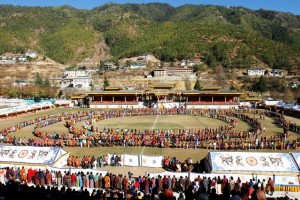
In commemoration of the accession of Gongsar Ugyen Wangchuck (the first King of Bhutan) to the throne in Punakha Dzong, December 17 is celebrated as the National Day.
National Emblem
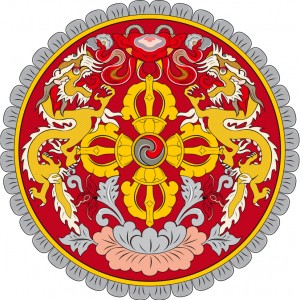
The National emblem, contained in a circle is secured by thunderbolts placed above a lotus surmounted by a jewel and framed by two dragons. The thunderbolts represent the harmony between secular and religious powers while the lotus symbolizes purity. The jewel signifies the sovereign power and the two dragons – a male and a female – stand for the name of the country – Druk Yul.
Bhutanese Society
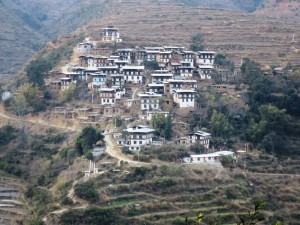
Bhutanese society was divided traditionally into the zhung (monarchy and bureaucracy), dratshang (religious community), and misey (common people) but without a caste system. When feudalism prevailed, people working for the kings and lords in different dzongs across the country were categorized by their professions. However, the division was not rigid since anyone could rise to the highest position. All people paid taxes. Today, there is no division except between a monk and a layman.
Dress
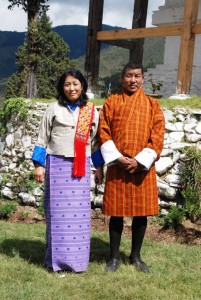
Longish robes called ghos tied around the waist by a cloth belt, known as kera are worn by Bhutanese men. The women wear ankle-length dresses known as kira. Both ghos and kiras are made of bright colored fine woven fabrics with traditional patterns and designs.

